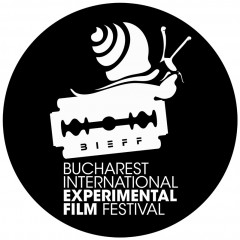At first glance, the short film seems to surprise normal proceedings of a school formal. But as time goes on, the observation of uncanny moments hint that things may not be exactly as they seem. ANDREW KAVANAGH is a Melbourne based writer director and a graduate of the Victorian College of the Arts. Andrew experiments with unusual formal devices to offer his audience fresh perspectives on circumstances they may already be familiar with. In his latest films he frees his stories from the constraints of historical context to create an experience where the old collides seamlessly with the contemporary.
Ioana Mischie: You started this short film from a poem you wrote. How would you describe the connection between poetry and filmmaking?
Andrew Kavanagh: Poetry evokes something beyond what is ostensible on the page, or in the case of filmmaking, on the screen. I like the way that poetry allows you to invoke other worlds or experiences so efficiently, by goading an audience to draw on their own experience, knowledge and instinct.
I’ve also found that written poetry is similar to short filmmaking in a number of ways. For example, they both have to be so economical in their delivery and both are good places to experiment with the formal boundaries of their respective mediums.
Ioana Mischie: In this film you explore two completely different rituals from two different epoques rather as a continuum than as a distinction. What made you choose this way of perceiving it?
Andrew Kavanagh: This has been an interest of mine for a while and one I hope to carry into a feature film soon. The idea that one has the freedom to draw on all of the shared experiences of our history in the one temporal space is very appealing to me as a story teller. The hard part is, creating the environment where the inclusion of such things seem natural.
In AT THE FORMAL, I was highlighting our need for ritual, a need that obviously still exists, but has become less violent (though it can still be quite violent), more abstract and less elemental. The transition between these modern and ancient rituals seemed like an efficient and striking way of saying “we think we’ve changed – but we haven’t really”.
Ioana Mischie: Conceived as a flamboyant visual continuum, your film seems to become in a way oxymoronic: macabre music juxtaposed on a joyful visual storytelling. How did you work with the concept of music in film?
Andrew Kavanagh: The trick with this film was balancing the literal world with the implied world until the two meet at the climax. The literal world is the world we know, the world of the high school prom, and the implied world is the world of the ancient ritual. Sombre, ceremonial sounding drums were a good way to hint at this implied world from the beginning of the film, so when the two worlds collide in the end, it is not so much a surprise, but almost a natural conclusion.
Ioana Mischie: The storytelling spectrum is unfolding as darker and darker, freedom and happiness unyieldingly become efficient tools for designing grotesque, torture and violence. It is an emotional crescendo and a very well-done one. How did you work with the actors during the shootings in order to achieve this emotional impact? How many rehearsals you made before the final one-take and how hard was to coordinate everything as a director?
Andrew Kavanagh: It was quite hard having to manage and rehearse such a large cast, particularly because we were shooting at dusk in a long take. I tried to keep the direction simple. I would give the actors simple goals and then let them rehearse while I moved onto the next group. Later I would return and workshop it more. It’s essentially speed dating. Shooting like this is very exhilarating. It’s a bit like building a machine, winding it up and just letting it go – hopefully it works. I was very fortunate to have the cast that I had – particularly the Headmaster/Shaman character, who brought something to the role I had not imagined possible.
Ioana Mischie: Everything starts as a realist diary-film, as a collection of memories and it ends almost surreal. You combine genres, types of storytelling without making them seem inappropriate. What is usually the biggest challenge for you when starting a film project: writing the script or finding the right visual key and visual concept?
Andrew Kavanagh: Usually, for me, it is about finding the right form. I love solid structures that are integral to the themes and characters in a story. Usually for me, the structure and the visuals come first, then quite quickly I realize what it is about. If it works, the script is written before you sit down.

Ioana Mischie: Part of the trilogy SHORT COLLISIONS, MEN OF THE EARTH, AT THE FORMAL and the upcoming INVASIONS tell the story of ancient rituals in modern contexts. Can you tell us more about the concept of the trilogy as a whole– how did it start, how does each of the short films enrich the main concept?
Andrew Kavanagh: The films are called SHORT COLLISIONS, because they depict a collision between our present and our past. The name is also derived from the way the stories are told, with the audience being lured into a situation they think they are familiar with only to have that perspective jolted at a point. Each of the films use this common format to address different emotional and thematic concerns. For example, the next film in the series, MEN OF THE EARTH, explores hidden male grieving, and the durability of class structures by presenting an emotional roadside burial of a dead foreman, and the coronation of a new forman on a modern council road worksite. While it uses similar structural techniques to AT THE FORMAL, the film has a very different effect.
More about AT THE FORMAL.


